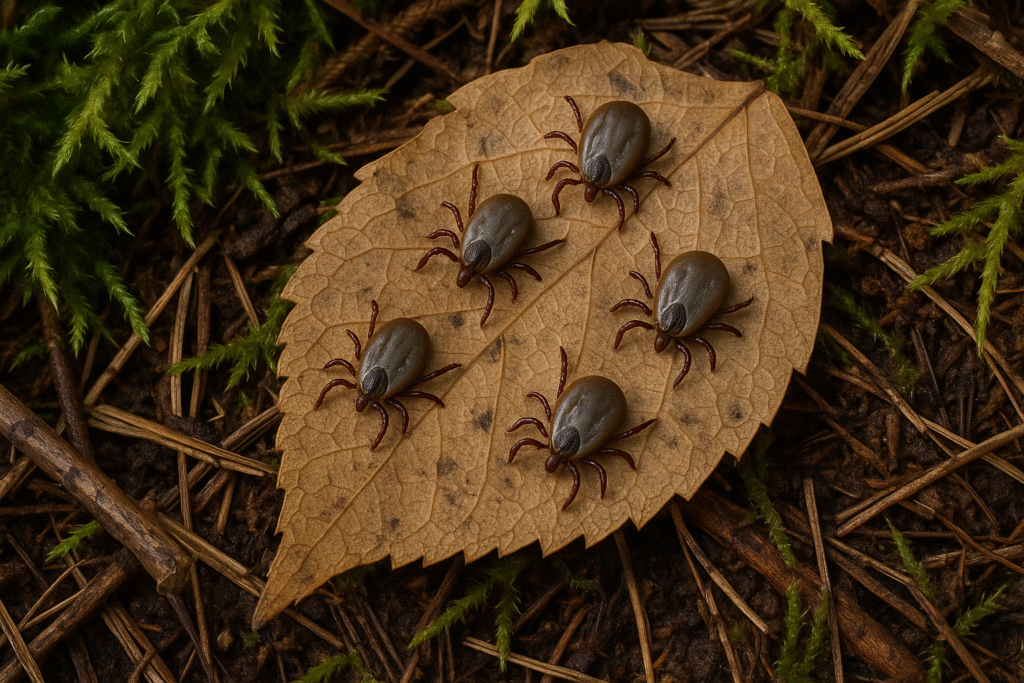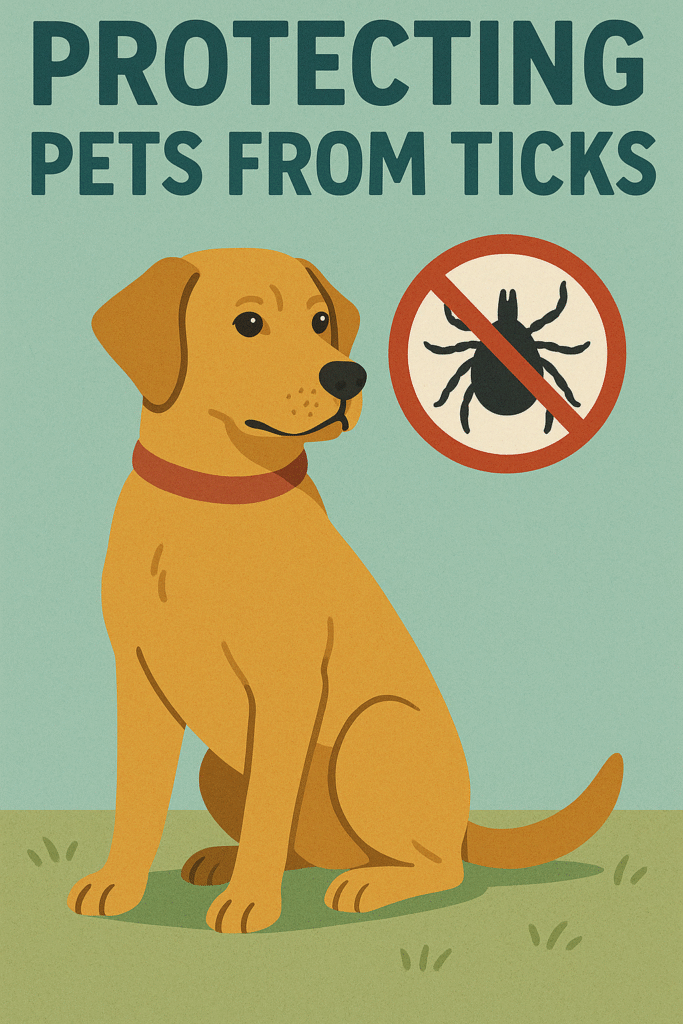Ticks and Outdoor Safety: Protecting Workers from Lyme Disease is a vital topic that every employer and outdoor worker must prioritize, especially as the warmer months bring increased exposure to tick habitats.

Lyme disease, a serious tick-borne illness caused by Borrelia burgdorferi, can lead to debilitating health consequences if left untreated.
For workers who spend significant time in wooded, grassy, or brushy areas—such as landscapers, construction crews, utility workers, and environmental field staff—understanding how to prevent tick bites is a cornerstone of occupational health and safety.
- Why Ticks Are a Concern for Outdoor Workers
- Recognizing the Signs of Lyme Disease
- Key Prevention Strategies for Tick Safety at Work
- Safe Tick Removal Procedures
- Employer Responsibilities in Tick Safety
- Tick Life Cycle and Feeding Habits
- Seasonal Activity and Peak Tick Months
- Tick Activity and Temperature
- Habitat Preferences and Geographic Distribution
- Tick Hot Spots
- Tick Repellents and Protective Clothing
- Protecting Pets from Ticks
- Safe Tick Removal Techniques
- First Aid and Medical Follow-Up
- Recognizing Lyme Disease Symptoms and Treatment
- Chronic Lyme Disease and Long-Term Management
- Educational Programs and Workplace Training
- Tick Surveillance and Public Health Initiatives
- Tick-Borne Diseases Beyond Lyme
- Canadian Resources on Lyme Disease and Tick Safety
- Internal Best Practice Link
- Conclusion: Ticks and Outdoor Safety Must Be Prioritized
Why Ticks Are a Concern for Outdoor Workers
Ticks are small parasitic arachnids that attach to the skin of humans and animals to feed on blood. The black-legged tick (commonly known as the deer tick) is the primary carrier of Lyme disease in North America.
These ticks are prevalent in many regions of Canada and the United States, especially during the spring and summer.
Outdoor workers are particularly at risk because:
- Ticks are often found in the same environments where workers conduct daily tasks.
- Long hours in nature increase the chances of exposure.
- Tick bites are usually painless and may go unnoticed for hours or days.
According to Government of Canada, early detection and prevention are key in avoiding complications such as chronic joint pain, neurological issues, and fatigue.
Recognizing the Signs of Lyme Disease
Early symptoms of Lyme disease usually appear 3–30 days after a tick bite and may include:
- A red expanding rash (often shaped like a bull’s-eye)
- Fever, chills, headache
- Fatigue and muscle aches
- Swollen lymph nodes
Without treatment, symptoms can worsen and lead to severe health outcomes. Workers should be trained to recognize the symptoms early and seek medical attention promptly.
Key Prevention Strategies for Tick Safety at Work
Implementing preventive measures can significantly reduce the risk of tick bites. Here are essential strategies for outdoor workers and employers:
Wear the Right Protective Gear
Clothing is the first line of defense. Workers should:
- Wear light-colored, long-sleeved shirts and pants to spot ticks more easily.
- Tuck pants into socks or boots.
- Use gaiters or duct tape to seal pants and shoes.
Use Tick Repellents Properly
Products containing DEET (20–30%) or Icaridin are effective when applied to exposed skin. For clothing and gear, permethrin-treated items offer extended protection.
Conduct Regular Tick Checks
Frequent checks during and after work help detect ticks early:
- Focus on warm, moist areas: armpits, groin, behind the knees, and scalp.
- Use mirrors to inspect hard-to-see areas.
- Don’t forget gear and backpacks—ticks can cling to surfaces.
Shower and Wash Clothes Promptly
- Showering within two hours of outdoor work can reduce infection risk.
- Wash work clothes in hot water and dry on high heat to kill ticks.
Safe Tick Removal Procedures
If a worker finds a tick attached to their body:
- Use fine-tipped tweezers to grasp the tick as close to the skin’s surface as possible.
- Pull upward with steady, even pressure—avoid twisting or jerking.
- Clean the area with soap and water or an antiseptic.
- Save the tick in a container for potential lab identification.

According to CDC guidelines, improper removal increases the risk of disease transmission.
Employer Responsibilities in Tick Safety
Employers must provide training, tools, and support to ensure worker safety in tick-infested environments. Key responsibilities include:
- Conducting risk assessments to identify tick-prone areas.
- Posting signage in known high-tick zones.
- Supplying repellents and protective clothing as part of PPE requirements.
- Implementing outdoor work schedules that avoid dense brush or tall grass when possible.
- Encouraging reporting and medical follow-up for suspected tick bites.
Creating a tick safety policy within your occupational health program reinforces a proactive safety culture.
Knowing tick life cycles, feeding habits, and habitat preferences can help you avoid tick bites. Ticks are most active during warmer months but can be a threat any time temperatures are above freezing. Different tick species have varying geographic distributions based on climate, vegetation, and host animal populations.
Tick Life Cycle and Feeding Habits
Ticks undergo four distinct life stages: egg, larva, nymph, and adult. Each stage requires a blood meal from a host animal to progress to the next stage, meaning ticks at any stage can potentially transmit diseases to their hosts, including humans.
Ticks can feed on a wide variety of animals, such as mammals, birds, and reptiles. Host preferences may vary depending on the tick species and life stage.

For example, blacklegged tick larvae and nymphs often feed on small mammals like mice and chipmunks, while adults prefer larger hosts such as deer or humans.
The feeding process can take several days, during which the tick remains attached to the host. As the tick feeds, its body expands, making it more visible. However, in their early life stages (larvae and nymphs), ticks can be as small as a poppy seed, making them difficult to detect.
Seasonal Activity and Peak Tick Months
Tick activity generally increases during the warmer months, typically from spring through fall. In Canada, peak tick activity occurs from May to July and from September to November. However, it’s essential to note that ticks can be active any time the temperature is above freezing.
Factors such as climate change and urbanization have led to changes in tick distribution and activity patterns.
Milder winters and extended warm seasons can prolong tick activity periods, increasing the risk of tick encounters.
Tick Activity and Temperature
Temperature plays a crucial role in tick activity. Most ticks become active when temperatures rise above 4°C (39°F). As temperatures increase, so does tick activity, with peak activity often occurring between 20-25°C (68-77°F). However, extreme heat can also limit tick activity.
When temperatures exceed 32°C (90°F), some ticks may seek shelter to avoid desiccation. This is why tick encounters can be more common during the cooler hours of the day, such as early morning or evening, during the summer months.
Habitat Preferences and Geographic Distribution
Ticks prefer wooded or brushy areas with high grass and leaf litter. These environments provide the necessary moisture, shelter, and access to potential hosts for ticks to thrive. Different tick species have varying geographic distributions based on factors such as climate, vegetation, and host animal populations.

For example, the blacklegged tick (Ixodes scapularis), the primary vector of Lyme disease, is more common in southeastern and south-central Canada, while the American dog tick (Dermacentor variabilis) has a wider distribution across the country.
Understanding the habitat preferences and distribution of ticks in your area can help you assess your risk of exposure.
Local public health units and government websites often provide information on the prevalent tick species and their distribution in specific regions.
Tick Hot Spots
While ticks can be found in various habitats, some areas are considered “tick hot spots” due to their ideal conditions for tick populations. These areas may include:
- Deciduous forests with dense undergrowth
- Woodland edges bordering grassy areas
- Tall grass and brush along trails or roadsides
- Areas with high populations of deer, rodents, or other host animals
When engaging in outdoor activities, be especially cautious in these tick hot spots and take appropriate precautions to minimize your risk of tick bites.

By understanding tick ecology and behavior, including their life cycles, feeding habits, seasonal activity, and habitat preferences, you can better assess your risk of tick exposure and take targeted measures to prevent tick bites during your outdoor adventures in Canada.
Tick Repellents and Protective Clothing
To reduce the chances of tick bites, apply EPA-registered repellents containing DEET, picaridin, or oil of lemon eucalyptus. These repellents are proven effective and recommended by health authorities such as the Centers for Disease Control and Prevention (CDC). Apply to exposed skin and clothing, following manufacturer instructions.
Wear light-colored, long-sleeved shirts and pants to make it easier to spot ticks. Tuck pants into socks or boots and consider treating clothing and gear with permethrin, a long-lasting tick repellent for fabrics.
Protecting Pets from Ticks
Ticks can latch onto pets and be brought into homes. Use veterinarian-recommended tick prevention products such as collars, sprays, or oral medications.

Regularly check pets for ticks after outdoor activities, especially around the ears, neck, and paws. For additional guidance, consult the Canadian Veterinary Medical Association.
Safe Tick Removal Techniques
If you discover a tick attached to your skin:
- Use fine-tipped tweezers to grasp the tick as close to the skin as possible.
- Pull upward with steady, even pressure without twisting.
- Clean the bite area and hands with soap and water or an antiseptic.
- Save the tick in a sealed bag with a moist paper towel and label it with the date and location.
Submit the tick for identification through services like eTick, a Canadian tick identification platform.
First Aid and Medical Follow-Up
Monitor for signs of Lyme disease such as fever, chills, fatigue, or a bullseye-shaped rash. If symptoms appear, seek medical attention immediately. Early antibiotic treatment is often effective.
If the tick was attached for more than 24 hours or if you are unsure of the duration, consult a healthcare provider. More information can be found through Health Canada.
Recognizing Lyme Disease Symptoms and Treatment
Symptoms of Lyme disease include flu-like illness, joint pain, and a circular rash known as erythema migrans. If left untreated, Lyme disease can cause neurological issues, arthritis, and heart complications.
Treatment typically involves antibiotics such as doxycycline or amoxicillin. Early treatment increases recovery success. Delayed or missed treatment can result in long-term complications or Post-Treatment Lyme Disease Syndrome (PTLDS).
Chronic Lyme Disease and Long-Term Management
For some individuals, symptoms may persist even after completing antibiotic treatment. This condition is known as Post-Treatment Lyme Disease Syndrome (PTLDS) or chronic Lyme disease.
Symptoms can include fatigue, joint pain, and cognitive issues. While the exact cause remains unclear, ongoing care may involve physical therapy, lifestyle adjustments, and support from a multidisciplinary healthcare team.
Managing chronic Lyme disease requires continuous communication with healthcare providers and may involve consultations with specialists in infectious disease, neurology, or rheumatology. Support groups and educational resources such as the Canadian Lyme Disease Foundation can provide valuable assistance to those coping with long-term symptoms.
Educational Programs and Workplace Training
To enhance prevention and awareness, employers should consider offering training on tick safety and Lyme disease prevention. This can include:
- Toolbox talks and safety briefings
- On-site posters and reminder signage
- Distribution of tick kits with tweezers, alcohol wipes, and instructions
Programs such as the First Aid 4U Tick Safety Course offer structured learning for both individuals and safety professionals. Training helps reinforce proper tick identification, removal, and aftercare.
Tick Surveillance and Public Health Initiatives
Provincial public health units regularly conduct tick surveillance to monitor population trends and species spread. Workers and residents can participate in these efforts by submitting ticks to identification platforms like eTick, contributing to community awareness and research.
Employers and outdoor organizations are encouraged to:
- Stay informed through Health Canada updates
- Consult regional tick risk maps
- Encourage employees to report tick bites and sightings
Tick-Borne Diseases Beyond Lyme
While Lyme disease is the most well-known, other tick-borne diseases are also emerging in Canada, such as:
- Anaplasmosis – flu-like symptoms caused by Anaplasma phagocytophilum
- Babesiosis – caused by Babesia microti, affecting red blood cells
- Powassan Virus – a rare but serious virus transmitted by infected ticks
These illnesses further highlight the importance of a comprehensive tick prevention strategy.
Canadian Resources on Lyme Disease and Tick Safety
To support workers and employers, several trusted organizations offer guidelines and education:
- OHSE.ca – Canadian occupational health and safety resources
- Government of Canada – Lyme Disease – DoFollow
- Canadian Centre for Occupational Health and Safety (CCOHS) – DoFollow
These resources offer downloadable posters, tick zone maps, and policy templates.
Internal Best Practice Link
Read our related article on Managing Heat and Cold Stress for Forestry Workers to address other environmental hazards faced by outdoor teams.
Conclusion: Ticks and Outdoor Safety Must Be Prioritized
Ticks and outdoor safety: protecting workers from Lyme disease is not just a seasonal concern—it is a year-round occupational health imperative.
By promoting awareness, proper PPE use, repellents, tick checks, and safe removal practices, employers can empower their workforce and drastically reduce health risks.
As we enter the high-risk months, remember: Prevent the bite, protect the worker.

No comments yet